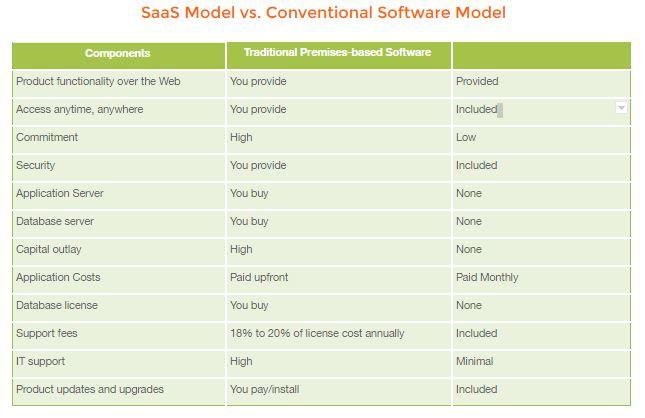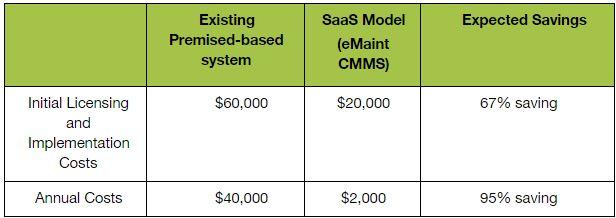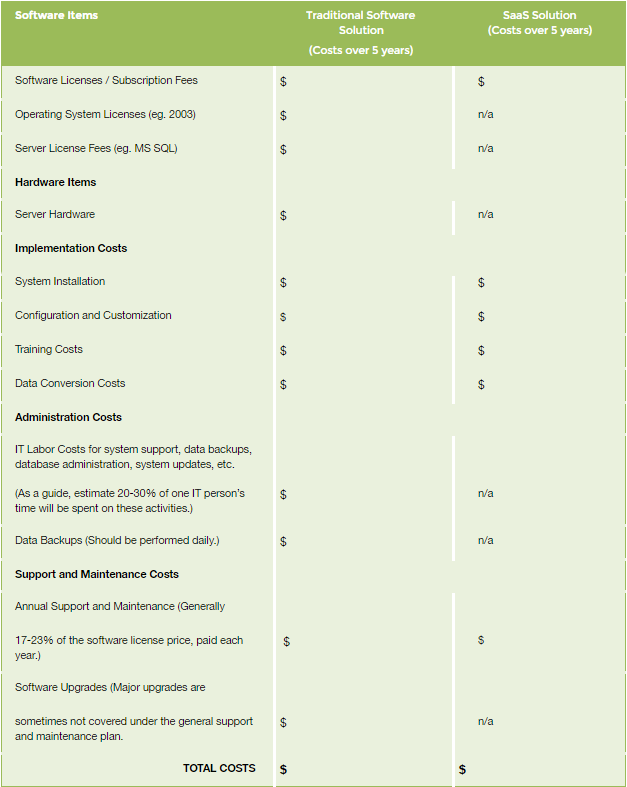Software-as-a-service (SaaS) is a model of software deployment, where the application is provided as a service to customers across the internet. You can think of the SaaS as “renting” the software to customers who access it remotely, most commonly over the Internet. The SaaS provider hosts the application, which it owns, on secure servers that it owns, operates, and maintains.
Introduction
The term Web 2.0 is commonly used to describe the changing trends in the use of the Internet. Web 2.0 innovations have resulted in adoption of the internet “as a platform that is spanning all connected devices; Web 2.0 applications are those that make the most of the intrinsic advantages of the platform: particularly delivering software as a continually-updated service that gets better the more people who use it” (http://radar.oreilly.com by Tim O’Reilly, 2005) and “going beyond the page metaphor of Web 1.0 to deliver rich user experiences.”
particularly delivering software as a continually-updated service that gets better the more people who use it”
– Tim O’Reilly
To evaluate whether a SaaS solution is a good fit for your organization, it is helpful to understand what the SaaS model is and how it compares to traditional, premises-based CMMS solutions. As well, it is important to be able to evaluate the costs that are associated with implementing a SaaS solution versus a traditional software solution so that the true total cost of ownership (TCO) of your CMMS is understood.
This piece is a guide to users that are in the market to purchase a CMMS solution where there are many options to choose from, and where systems should be evaluated not just for their functionality and ease of use, but also for their total cost of ownership (TCO). The white paper particularly focuses on providing a clear outline on the TCO of the SaaS model in contrast with traditional, premises based solutions in the delivery of CMMS software.
What is SaaS?
Software-as-a-service (SaaS) is a model of software deployment, where the application is provided as a service to customers across the internet. You can think of the SaaS as “renting” the software to customers who access it remotely, most commonly over the Internet. The SaaS provider hosts the application, which it owns, on secure servers that it owns, operates, and maintains.
SaaS providers are responsible for maintaining the application and providing access to it, and offering subscriptions to its service, generally a per-user fee that is paid monthly or annually. The user pays a fee to the SaaS provider for its hosting services, and can log into their system online, via a standard web browser. The subscription fee includes maintenance of the application, system updates and upgrades, and often includes unlimited technical support. The SaaS provider and the subscriber enter into an agreement that specifies the services being provided, the service level, and the terms of use.
The SaaS Model as compared to traditional, premises-based software
The SaaS model can be contrasted with conventional or premises-based software that is purchased, installed, administered and supported internally on the customer’s own network. With a traditional or premises-based software solution, the customer purchases the software licenses, rather than “renting” the application.
The customer provides all of the IT support required to maintain and support the server that houses the application, maintain and support the application that resides on both the server and any workstations on which it is installed, and install any bug fixes, updates or upgrades for the application. In addition to the upfront software licensing costs, the customer also purchases an annual support and maintenance contract from the CMMS vendor.
The table below contrasts the differences between a SaaS model and the traditional software model.

Advantages of the SaaS Model
Companies that choose a SaaS model for their CMMS solution gain many business benefits:
No software or hardware to purchase, install or maintain. Given the current shortage and expense of dedicated IS personnel, the SaaS model means less of a burden on IT departments that already have many demands placed on them.
Rapid deployment. Since there is no software installation required, maintenance personnel can get started with using the system immediately. Putting the SaaS into software: A cost benefit analysis of Software as a Service model (SaaS) in the delivery of CMMS/EAM solutions. Simple, low cost implementation for multiple locations. Multi-site locations don’t need high power servers for Terminal Server or Citrix architectures to use a SaaS model, so the implementation process is simplified.
No capital outlay. Because the subscription fees can be paid on a monthly basis, without the need to purchase the software licenses outright, it is easier to budget for a SaaS-solution and pass the monthly costs through an operating budget.
No updates or upgrades to install. Users enjoy access to the latest version of the solution because updates, upgrades and enhancements are made available automatically.
No software support fees. Support is included with the subscription fee.
Anytime, anywhere access to the system.
No commitment. If the solution, or the provider for that matter, no longer meets your needs, you can cancel the service and switch to a different solution.
Access to comprehensive security, back-up, disaster recovery and support services.
Spend less time on managing your application and more time on your core business, doing what you are good at.
And of course, a lower Total Cost of Ownership.
When considering a SaaS solution, it is important to fully understand the benefits of the SaaS model as well as the Total Cost of Ownership (TCO) for hosted vs. premises-based CMMS Solutions.
Case Study
– Steve Sellers,
MRO & CMMS Coordinator,
Power Partners
Cost Comparison
“eMaint is faster, easier to use, and is not cumbersome for the end users to learn and operate”

As noted by Brooks Lucas, Facility Manager at Cadillac Casting, apart from the cost benefits of eMaint’s SaaS solution, “eMaint is faster, easier to use, and is not cumbersome for the end users to learn and operate.”
What is the Total Cost of Ownership of SaaS compared to traditional models?
When comparing the costs of a SaaS solution and a traditional, premises-based software solution, people often fall into the trap of simply comparing the subscription fees of the SaaS against the software license fees of the traditional system. The application license fees are only a small portion of the total cost to implement, customize, manage and support traditional software.
Imagine the Total Cost of Ownership (TCO) is similar to an iceberg…
If we compare average SaaS subscription fees to average software license fees, the comparison might look something like this:

While the percentages shown in the illustration above may not be an exact match to your specific situation, they provide a good general guideline for understanding and comparing the overall costs of the two models.
Power Partners realize a savings of 65% in annual subscription fees
Power Partners is a leading manufacturer of pole-type distribution transformers that bring electrical power to homes and business throughout the world. It had the challenge that after upgrading their existing premise-based CMMS software license they would need to invest in new hardware/PCs on the floors to operators & technicians to be able access the CMMS. As well, slow performance of the existing premised based system was resulting in lack of system use, lack of data capture and analysis.
eMaint’s customer service approach, combined with a ‘try before your buy’ live trial, resulted in Power Partners selecting eMaint CMMS from among 20 packages. After an initial 50% cost savings resulting directly from the switch to eMaint CMMS, Power Partners’ MRO & CMMS Coordinator, Steve Sellers, said, “We realized a savings of 65% in annual subscription fees”. The switch to eMaint CMMS also enabled Power Partners to keep their existing hardware and also to experience a significant increase in performance as compared to their previous system. Noted Sellers, “Because eMaint is so easy, the guys actually use it!”
How to evaluate the total cost of ownership yourself!
As you evaluate various CMMS packages to determine whether they have the functionality to meet your requirements, you are likely to identify suitable options that fall under both categories – SaaS and traditional software. Part of your evaluation process should include a cost analysis to determine the total cost of ownership for both.

The table below lists the cost categories – including Software, Hardware, Implementation, Administration, and Support/Maintenance – that comprise the “big picture” of total cost of ownership for CMMS.
You can use this guide to fill in the line items for your own CMMS project to help you fully appreciate and understand the total cost of ownership of the CMMS packages that you are considering.
